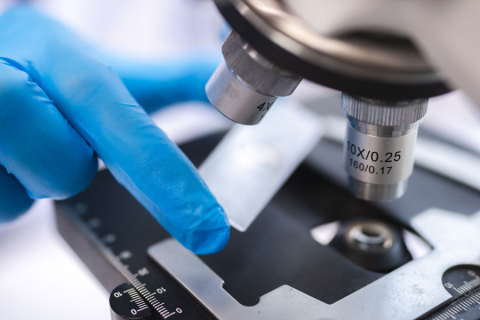MINIATURA supports scientific activities that constitute starting points for developing guidelines for research projects, the financing of which can then be applied for in the National Science Center’s competitions or in other national and international competitions.
The fifth ranking list of the eighth edition of the competition included 132 researchers. They will receive funding ranging from PLN 5,000 to 50,000. The winners included:
- doctor Radosław Rzepliński from the Department of Normal and Clinical Anatomy,
- doctor Tomasz Wojciechowski from the Department of Normal and Clinical Anatomy,
- doctor Arkadiusz Kocur from the Department of Drug Chemistry and Pharmaceutical and Biomedical Analysis.
Identification of cerebrospinal fluid circulation and outflow pathways
Doctor Radosław Rzepliński is the author of a pilot study titled ‘The glymphatic system of the human spinal canal – identification of cerebrospinal fluid circulation and outflow pathways’. As it is written in the project application, the flow of cerebrospinal fluid through the nervous tissue is crucial for its proper functioning, because this is the way the brain is to be cleansed of toxins and metabolic products. There are indications that impaired functions of the glymphatic system influence the development of dementia and are also important in the regeneration of the nervous system after ischemic and hemorrhagic strokes. The aim of the study is to identify cerebrospinal fluid circulation and outflow pathways in the human spinal canal based on anatomical preparations. The acquired data will allow to plan the study proper – including the scope of analyzed anatomical locations, the size of the study group, the need to use additional imaging techniques or tissue staining.
Describing a new surgical technique in otosurgery and skull base surgery
Doctor Tomasz Wojciechowski is the author of a pilot study titled ‘Surgical and radiological anatomy of the petrous part of the temporal bone in the context of planning surgical access to the jugular foramen area, internal auditory canal and the top of the pyramid’. As it is written in the project application, the temporal bone is the most complex bone in the human body, both in terms of shape and composition. The petrous part of the temporal bone runs through the cranial nerves, which are important for life, but also shelters the delicate organs of hearing and balance. For this reason, the temporal bone is the site of many diseases of various causes and origins, starting from developmental defects, through inflammatory and degenerative diseases, ending with cancer. The study results can be used to develop a new surgical technique in otosurgery and skull base surgery, so as to improve the process of diagnosing and treating patients with chronic cholesteatoma otitis and temporal bone tumors.
Development of a comprehensive method for determining anticoagulants
Doctor Arkadiusz Kocur is the author of a pilot study titled ‘Personalization of pharmacotherapy with new generation oral anticoagulants based on alternative sampling strategies – in vitro/ex vivo studies as an introduction to remote monitoring of anticoagulant treatment’. The main goal of the project is to develop a methodology for the deteremination of new generation direct oral anticoagulants (DOACs) – rivaroxaban, apixaban and dabigatran in capillary blood samples. The aim is to develop an LC-MS/MS method for determining blood concentrations of these anticoagulants and, additionally, as part of the project, extended tests of stability of this type of drugs will be performed. According to the project application, determining the drug concentration along with the assessment of coagulation parameters and creatinine clearance may be necessary to determine the optimal therapeutic strategy.
